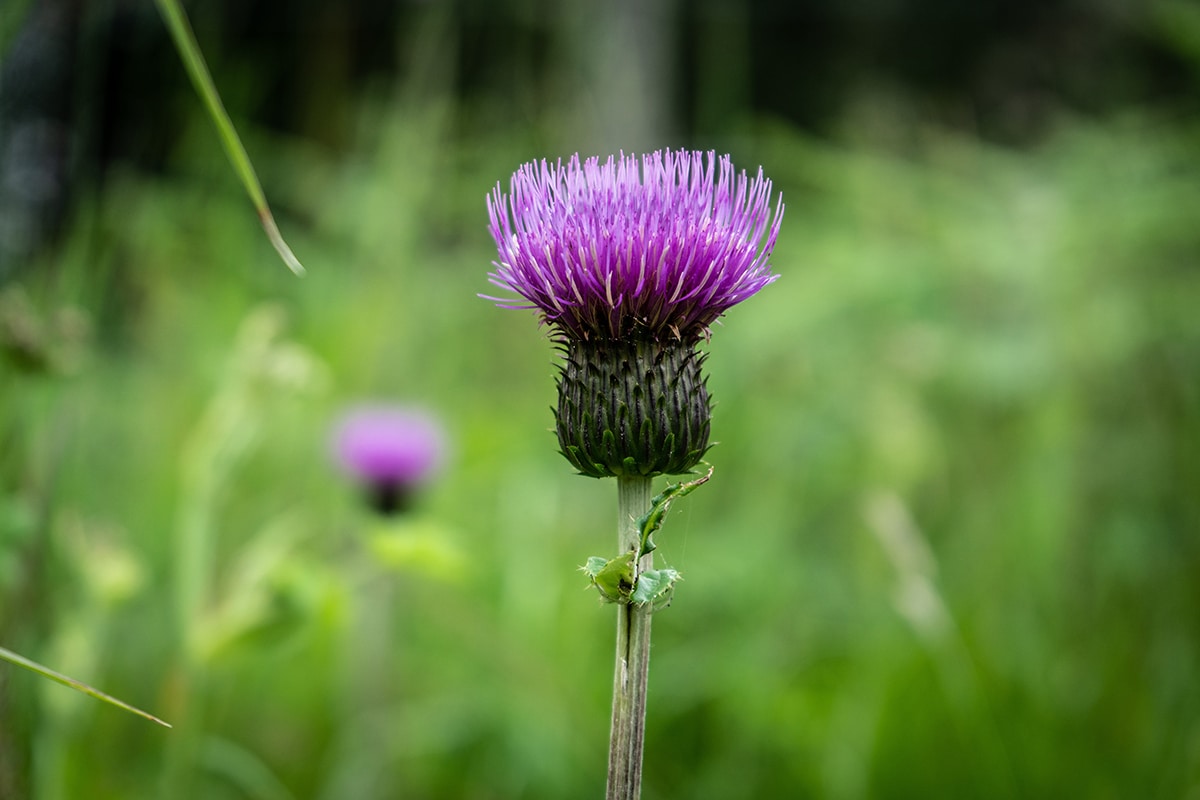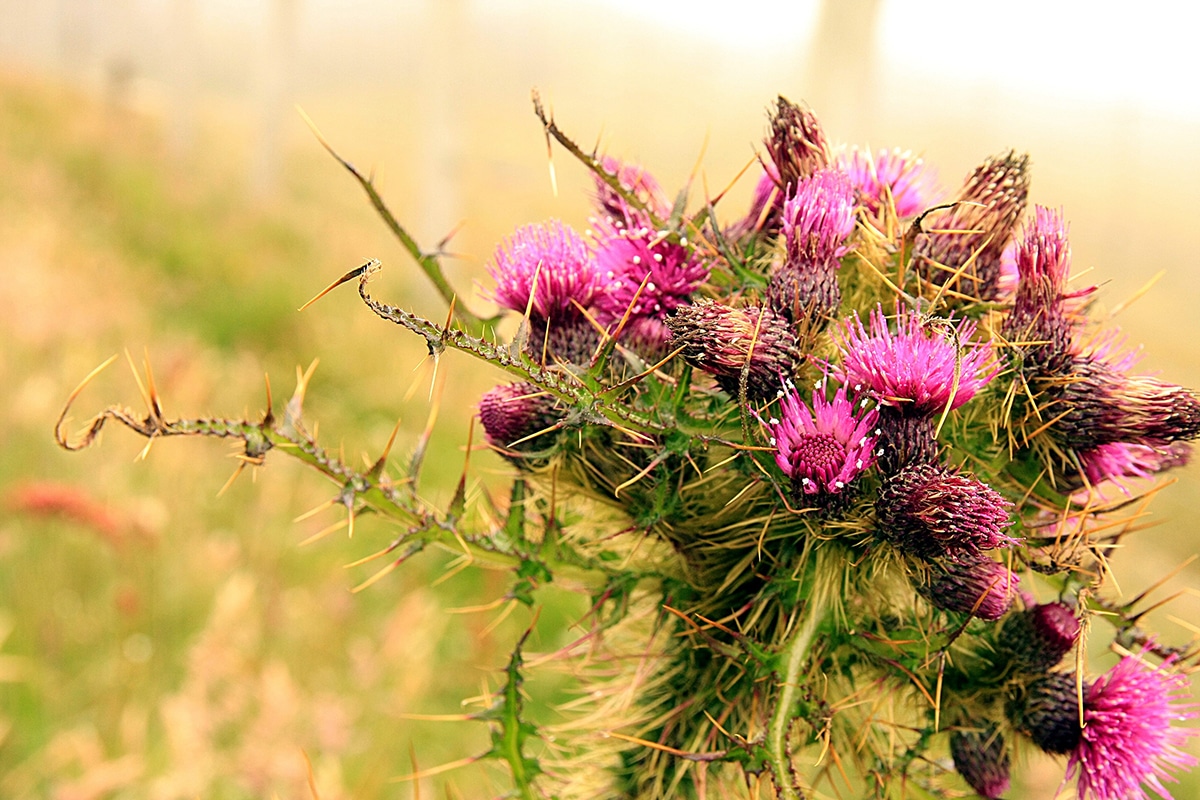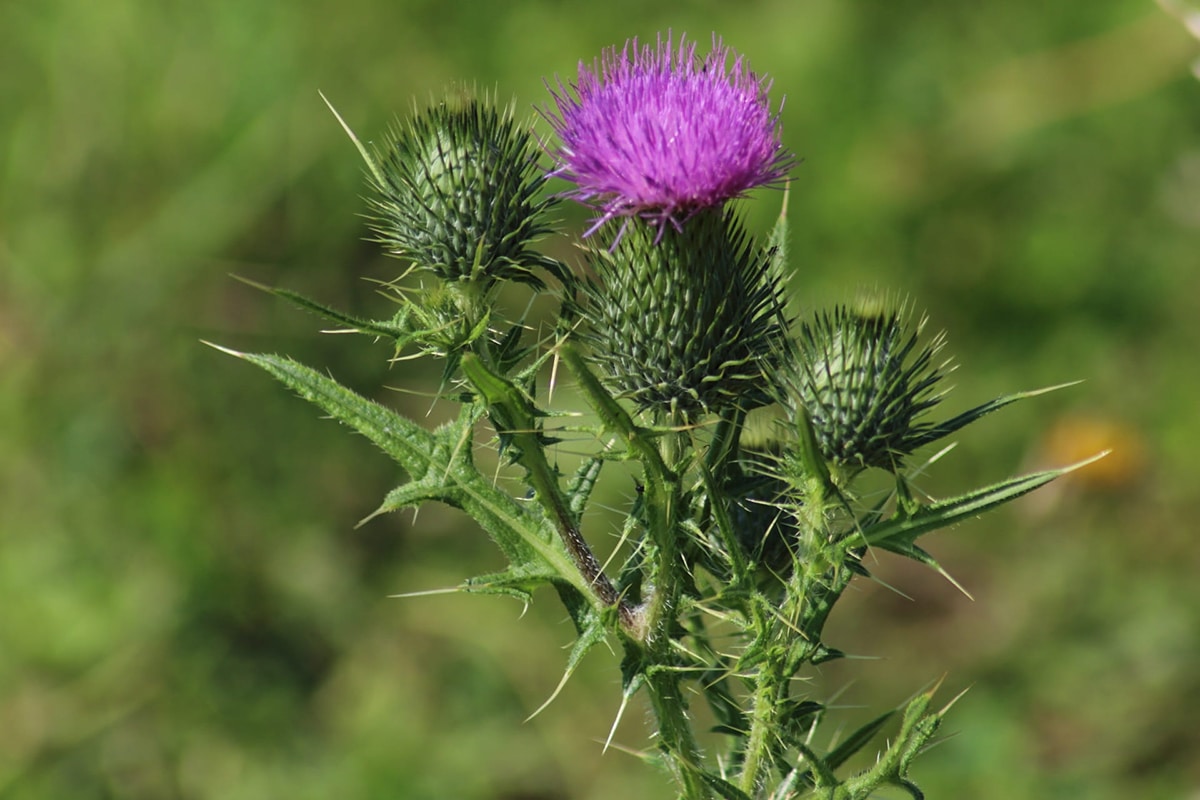
There are many flowers that exist on this planet. However, some of them stand out more than others, either for beauty, for their properties or for the importance we give them on a symbolic level. The latter is usually closely related to the region in which we live. It is possible that here a certain plant has no significance, while in another place it may even be the emblem of the country. This is the case of the Scottish thistle, which we are going to talk about in this post.
So do not hesitate to continue reading if you want to find out what is the relationship between this precious plant and that country belonging to the United Kingdom. we will explain what is the thistle and what is its meaning in Scotland, commenting on some legends related to him. I hope this information is interesting for you!
What is thistle?

Before explaining the meaning of the thistle in Scotland, we will first discuss what exactly this vegetable is. Well, it is a plant belonging to the family Asteraceae whose scientific name is Cynara cardunculus. It is native to North Africa and the Mediterranean area of Europe. It should be noted that the thistle is not only a very beautiful flower, but it is also edible. It has a fairly fine flavor and is low in calories, which makes it an ideal vegetable for any diet.
One year after being planted, the thistle It generates a rosette with very large leaves that can reach a length of up to one meter. In its second year of life, a ribbed stem emerges from the center of the rosette. This stem can measure up to 150 centimeters. At the top it ends up branching. It has very large flower heads that produce artichokes. Besides, It has tubed flowers of violet color and feathery texture. They are very striking and highly decorative.
It should be noted that the stems of this vegetable are covered in tiny thorns. They are so small that they can hardly be seen, but if they come into contact with our skin they can do us a lot of damage. Precisely to avoid this stinging pain, various crops of thistles have been developed that do not have thorns, thus facilitating the harvest of artichokes.
What does the thistle mean in Scotland?

The exact origin of the thistle as a symbol of Scotland is unknown. However, historically, it has its first appearance dated to the mid-XNUMXth century, in some sources belonging to the reign of Mary Stuart's great-grandfather, King James III. At the end of that same century, this flower had already become one of the two most popular emblems of that country, next to the flag of the Cross of Saint Andrew. Such was its fame that it even appeared on coins of that time.
There are some legends related to this flower that could explain why it became the emblem of this country, but we will discuss them later. It is probable that the origin of this fact is due to the traditional use that is due to the thistle in Scotland. It was widely used to decorate vessels, for example. Weapons were also decorated with it that used to go to the prestigious Order of the Thistle.
And what is this order? Its original English name is "The Most Ancient and Noble Order of the Thistle", which translates as" The Most Ancient and Most Noble Order of the Thistle. It is nothing more and nothing less than the second most notable order of chivalry in the entire United Kingdom, second only to the Order of the Garter. Of course, Scotland is the most honorable. Also in this case the origin of it is unknown, although it is speculated that it was created in the mid-fifteenth century by James III. The motto of this order of knights is the same as that of Scotland: «Nemo me impune lacessit«. This phrase is in Latin and means "No one provokes me with impunity."
Legends and curiosities related to the Scottish thistle
As we have already mentioned above, the historical origin of the thistle as a symbol of Scotland is not known. However, there is a legend that can shed some light on this subject, but of course, we will never know if it is true or not. This takes place during the High Middle Ages, a time when the Scots fought with the Vikings. According to what they say, a group of these Nordic warriors was going to ambush a group of the former. However, one of the Vikings accidentally stepped on a thistle. As the thorns of this flower stuck into him, he couldn't help but cry out in pain. Obviously, the Scots were alerted and were able to save themselves. Thanks to that miraculous event, the thistle became the guardian of warriors and, consequently, the national flower of Scotland.
They also say that Queen Mary Stuart loved this beautiful plant, especially to decorate. According to what they say, this flower was present in the vast majority of fabrics and embroideries that he made. In fact, this queen owned a gold ring that contained an engraving of a thistle necklace. This royal jewel is to this day in the British Museum. It should also be noted that in the abbey where the queen lies, in Westminster, there is a sculpture that includes the Scottish thistle to keep her memory.
For those of you who don't know much about Scottish history, Queen Mary Stuart was executed at Fotheringhay Castle in England. Later, James VI, her son, would demolish it. According to legend, the Scottish queen deposited the gold ring mentioned above in that place. Since his tragic death, it is said that thistles bloom around the castle every summer, called "Queen Mary's Tears."
It is very curious how something as simple as a flower can have such a high emblematic and national value. The Scottish thistle is a really beautiful flower and ideal to represent this country.